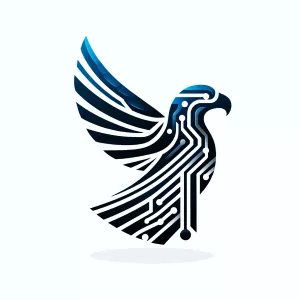- within Finance and Banking topic(s)
- within Finance and Banking topic(s)
- in Middle East
- in Middle East
- in Middle East
- in Middle East
- in Middle East
- with readers working within the Media & Information industries
- within Finance and Banking, Tax, Government and Public Sector topic(s)
Key Takeaways:
- Decentralised finance (DeFi) is evolving beyond a purely speculative, crypto-native activity into a more mature ecosystem that increasingly seeks sustainable yield and real-world impact, marked by the rising adoption of real-world assets (RWA) such as bonds, private credit, real estate, and cash equivalents being tokenised and traded on DeFi protocols.
- With active regulatory initiatives (e.g. VARA's collaboration with the Dubai Land Department), the UAE is emerging as a testbed for compliant, tokenised RWAs demonstrating that regulatory engagement and innovation can go hand in hand.
- From legal enforceability and counterparty reliance to smart contract vulnerabilities and fragmented regulation, the convergence of RWAs and DeFi is not without its challenges. Addressing these will be crucial to scaling the ecosystem sustainably.
In the evolving world of on-chain finance, two terms are increasingly shaping the conversation: DeFi and tokenised RWAs. While DeFi originated as an experiment in disintermediation, built around transparent, on-chain protocols that seek to remove traditional central authorities in finance, allowing self-custody and open access. The movement is now entering a more complex phase, where it must prove its value to a larger investor base.
Enter tokenised RWAs, which can either be digital representations of tangible assets (cash, bonds, commodities, real estate, intellectual property rights, etc.) or assets that are natively issued on-chain. RWAs are being positioned as a bridge to bring yield and stability to DeFi, moving the sector from speculation toward more sustainable, mainstream use cases. Projections suggest continued rapid growth, possibly reaching the $10-$20 billion range by the end of 2025 if current trends persist.
Why RWAs in DeFi Matter
The initial surge in DeFi activity, particularly during "DeFi Summer" 2020, was dominated by speculative trading and the creation of crypto-native assets. This period was marked by volatility and unsustainable yields.1 As speculation cooled, it became clear that DeFi needed access to stable, real-world, yield-generating instruments to continue to grow and gain legitimacy. The integration of tokenised RWAs into DeFi, therefore, marks a significant evolution in the world of on-chain finance. The benefits of RWAs in DeFi include:
- Enhanced Liquidity: Tokenising traditional assets on blockchain platforms allows global, 24/7 access to investment products, broadening the pool of potential liquidity providers. This global reach can help deepen secondary markets and attract institutional capital.
- Accessibility: Tokenisation enables fractional ownership, breaking down large, previously inaccessible assets (such as real estate or private credit funds) into smaller, tradable units. This reduces investment minimums and enables retail participation.
- Transparency: The use of public ledgers means all transactions and activities related to tokenised RWAs are auditable and visible to all participants. Transparency helps foster trust and level the informational playing field in complex markets.
- Stability: RWAs are typically linked to underlying, real-world cash flows (e.g., U.S. Treasuries, real estate income), providing less price volatility compared to purely crypto assets. Their integration into DeFi protocols brings more consistent returns and builds resilience against market shocks.
By incorporating RWAs, DeFi aligns itself more closely with traditional finance and the broader real economy. This shift:
- Promotes Legitimacy: DeFi's value proposition moves from speculative gains to long-term, utility-driven products.
- Attracts Diverse Participants: Both institutional and retail investors find new ways to access and benefit from blockchain finance.
- Paves the Way for Mainstream Adoption: Regulatory progress, such as tokenised fund approvals in major markets, and successful pilot projects (e.g., real estate tokenisation in the UAE), demonstrate real-world relevance and scalability.
The narrative that RWAs represent the next key growth phase for DeFi is well-supported. RWAs are already driving innovation, improving risk-adjusted returns, and providing a credible path for DeFi to serve as a bridge to traditional markets and real-world utility.
Real-World Examples of Real-World Asset Tokenisation
Several DeFi protocols and platforms have rapidly expanded their integration of tokenised real-world assets(RWAs), employing innovative frameworks that prioritize security, compliance, and composability. A major industry development in 2025 is the widespread adoption of the ERC-4626 vault standard and multi-chain interoperability, which have brought greater standardization to how yield-bearing RWAs (such as tokenised funds, credit products, and money market instruments) are created, managed, and used as collateral within DeFi protocols. Recent breakthroughs include:
- On-chain Money Market Funds
In 2025, tokenised money market funds surpassed $2 billion in value on public blockchains, with new protocols expanding support for multiple chains and setting daily liquidity, instant settlement, and transparent yield distribution as mainstream features for qualified investors. This provides stable, low-risk yield options for DeFi participants and enables direct composability with lending and borrowing platforms.
- Tokenised Private Credit and Funds
Private credit vehicles and alternative funds have been structured with real-time, on-chain net asset value (NAV) updates and permissioned access, often using multichain interoperability to allow for instant transfers and seamless cross-chain settlement. These features lower barriers to entry for investors, introduce daily or on-demand redemption, and increase participation by making traditionally exclusive asset classes more accessible via tokenisation.
- Programmable Index and Yield Products
2025 saw the launch of multiple institutional-grade index and yield products built natively on blockchain. These provide diversified exposure (to assets such as BTC, ETH, SOL, stablecoins, etc.) and enable investor interests to be tokenised, instantly transferable, and usable as composable collateral across DeFi protocols.
- Direct RWA-to-DeFi Integration
The growth of permissioned liquidity pools and lending markets now allows tokenised RWAs such as Treasuries, real estate shares, or fund tokens to serve as accepted collateral, enabling global lenders to earn RWA-backed yield while maintaining regulatory compliance.
These advances illustrate the broader industry trend of RWA tokenisation creating a more composable and accessible DeFi ecosystem. This unlocks real-economy assets for on-chain finance, aligning DeFi and traditional markets on a scale never before possible.
Risks and Constraints
It is important to note that merging RWAs with DeFi is far from straightforward. With all the benefits considered, Merging RWAs with DeFi does present genuine complexities and introduces additional risk vectors not present in purely on-chain financial systems. These risks include:
- Counterparty and Legal Risk
While DeFi's promise lies in decentralisation, tokenising real-world assets typically requires intermediaries such as custodians, trustees, or special purpose vehicles (SPVs) to hold and manage off-chain legal claims to the assets. This introduces counterparty risk, as investors must rely on these centralised entities to manage assets and uphold contractual claims. In cases of insolvency or bankruptcy among these intermediaries, enforcing claims over the underlying assets can be complex and may require the involvement of traditional legal systems, often leading to uncertainty regarding ownership and asset recovery. These structures challenge DeFi's core promise of being trustless and non-custodial, making due diligence and reliable governance even more important.
- Liquidity and Exit Risk
Tokenized RWAs often do not have deep or continuous secondary market liquidity. Without robust trading venues, investors may struggle to exit positions, especially in times of market stress a concern not present in more liquid crypto markets. Market fragmentation, differing regulatory environments, and the novelty of asset classes can further constrain the development of deep liquidity pools.
- Smart Contract and Composability Risk
Proper integration of tokenized assets into DeFi protocols depends on robust, secure, and composable smart contracts. Vulnerabilities including bugs, logic flaws, or poor oracle design—can lead to exploits and significant financial losses for investors. Exploits in smart contracts are often irreversible. The composability that enables innovation and layered products can also amplify risk if vulnerabilities propagate across protocols.
- Regulatory Risk
Regulatory frameworks for tokenized RWAs are still evolving and are often inconsistent across jurisdictions. This creates a landscape of uncertainty where compliance requirements may change rapidly, or where new rules could impact the operation, legality, or accessibility of RWA-related DeFi products. Platforms handling RWAs must consider securities laws, anti-money laundering (AML), know your customer (KYC) requirements, and data privacy regulations, all of which vary by region and can change with little notice.
Regulatory Considerations: The UAE as a Case Study
One of the most significant challenges in merging DeFi with RWAs is regulatory. RWAs introduce legal and regulatory complexities not present with crypto-native tokens. Unlike crypto-native tokens, real-world assets are tied to legal claims, enforceable rights, and jurisdiction-specific obligations. Legal claims to RWAs require clarity on enforceable rights, transferability, investor protection, and jurisdiction to be well documented in industry and legal commentary. However, jurisdictions around the world continue to grapple with the question of how to treat tokenised assets.
The UAE has positioned itself as a leader in digital asset innovation, offering diverse regulatory environments under different authorities, including the Virtual Assets Regulatory Authority ("VARA") and the Securities and Commodities Authority ("SCA"). This proactive approach is evident in recent developments. In April 2025, the Dubai Land Department ("DLD") and the VARA signed a collaboration agreement to improve the regulatory environment related to virtual assets in real estate transactions.2 This follows from the pilot phase of the Real Estate Tokenization Project of the DLD, launched in March 2025, to tokenise property title deeds.3 More recently, this pilot project culminated in the launch of the "Prypco Mint" platform on 25 May 2025.4 These developments lay crucial groundwork for the integration of real-world assets into DeFi protocols. Tokenised real estate, once legally recognised, can be deployed within decentralised lending or yield platforms as collateral, unlocking use cases that merge physical asset ownership with programmable on-chain finance.
Conclusion
The integration of real-world assets (RWAs) with decentralized finance (DeFi) represents a significant evolution for the blockchain sector, shifting its focus from speculation to tangible value creation, sustainability, and legitimacy. However, the journey to fully merge RWAs with DeFi is neither simple nor risk-free. Key challenges remain across counterparty and legal risks, liquidity constraints, smart contract vulnerabilities, and an evolving regulatory landscape each requiring careful navigation and robust solutions. Jurisdictions that exhibit regulatory foresight and technical innovation, such as the UAE with its proactive frameworks and specialized authorities, are poised to play a defining role in shaping this convergence. Their willingness to collaborate across sectors and launch pilot projects lays critical groundwork for legitimizing and scaling tokenized real-world assets within DeFi ecosystems. Ultimately, the collective efforts of regulators, technologists, and market participants will determine how successfully RWAs are brought on-chain, unlocking new avenues for investment, financial inclusion, and economic growth.
Footnotes
1 Sarah Austin, How 2020 Became the Year of DeFi and What's to Come in 2021, Entrepreneur (Jan. 9, 2021), https://www.entrepreneur.com/science-technology/how-2020-became-the-year-of-defi-and-whats-to-come-in-2021/362319.
2 Dubai Land Department and Dubai Virtual Assets Regulatory Authority Collaborate to Enhance Leadership in the Real Estate Sector and Virtual Assets Regulation, Government of Dubai (Apr 6, 2025), https://dubailand.gov.ae/en/news-media/dubai-land-department-and-dubai-virtual-assets-regulatory-authority-collaborate-to-enhance-leadership-in-the-real-estate-sector-and-virtual-assets-regulation?utm_campaign=Insights&utm_source=hs_email&utm_medium=email&_hsenc=p2ANqtz–LuEV2QuAyyi1u5KqkBvoa8NLSqAgv-GAyhrHWlDOSm8Q6fSxnZ_OsB60WiAp2pZdNfnrG#/
The content of this article is intended to provide a general guide to the subject matter. Specialist advice should be sought about your specific circumstances.





